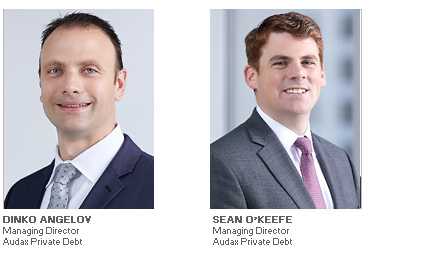
The rapid growth of the private credit market has captured the attention of critics eager to postulate that the size of the market, alone, could begin to pose financial stability risks. What many overlook -- besides the fact that these worries are unfounded -- is that as the market scales in size, distinct benefits begin to surface for middle market CLO managers.
To be clear, much of the handwringing over the growth of private credit is being driven by a lack of understanding around the asset class, in addition to lingering misconceptions that conflate CLOs with CDOs, or collateralized debt obligation. The latter, which invest in everything from bonds to subprime mortgages, did indeed help trigger the global financial crisis in 2008. CLOs, on the other hand, were characterized by their resiliency during the GFC, while also demonstrating how active management can distinguish CLO managers during periods of volatility and uncertainty.
Moreover, the Federal Reserve, in its May 2023 Financial Stability Report, concluded that any prospective vulnerabilities are “limited,” due in part to their closed-end fund structure, the secured nature of private credit, and the stability and diversity of investors in the asset class, largely made up of private pension funds, insurance companies, and high-net-worth individuals. The Fed also concluded that private debt has “become an increasingly important source of credit for some businesses, particularly middle-market companies.”
Following the rapid growth of the segment over the past eight years, the newfound depth and breadth of the market is also delivering new capabilities to middle market CLO managers around execution. And these trends, which show no signs of abating, should enhance liquidity in the market, and therefore the extent to which CLO debt investors can actively manage their portfolios to capitalize on the evolving opportunity set in front of the asset class.
No, All CLOs are Not the Same
Just as a lingering tendency exists to conflate CLOs and CDOs, those less steeped in private credit may also assume that all CLOs look the same on the surface. But the distinctions between middle market CLOs and CLOs comprised of broadly syndicated loans (BSL) -- once observers look beyond the basic structure – can also be pretty stark.
The illiquidity premium available in the middle market provides the basis for the higher spreads and higher yields that traditionally characterize the underlying credits comprising middle market CLOs. But middle market loans also generally enjoy higher original issue discounts for new loan commitments; have more conservative capital structures (with total leverage as many as two or three turns below broadly syndicated loans); and more commonly feature structural protections that facilitate a better alignment of interests between lenders and the PE sponsors their loans support.
Specific to CLOs, the higher yields also facilitate an equity arbitrage opportunity for middle market CLO managers that is consistently higher than their BSL counterparts. To put this into perspective, the middle market CLO segment has historically delivered a 5% to 8% incremental return compared to BSL CLOs, while the default rate across all middle market CLO tranches of debt issued over the past 25 years is barely a quarter of a percentage point (0.30%), underscoring the stability of the segment.
These risk-adjusted return dynamics -- coupled with renewed interest in floating-rate debt strategies in an inflationary, higher-for-longer interest rate environment -- has further catalyzed interest in middle market CLOs among investors. Since 2016, the middle market CLO segment has grown at a roughly 25% CAGR, with $27 billion of middle market CLOs issued by 28 managers last year alone.
It still begs the question of whether this continued growth can sustain itself and what its impact will be on middle market CLOs?
Industry Growth Promotes Execution
On one hand, the growth in AUM across private debt may not have as big of an impact as some might assume. That’s not to say that during periods when deal flow is down, when there’s a flight to quality across the M&A market, lenders won’t compete aggressively for the most attractive credits. But over a long-term time horizon, the supply-and-demand dynamics haven’t necessarily changed. Indeed, the growth across private credit is in part driven by market share gains as the more traditional commercial bank lenders and regional banks pulled back from direct lending activities.
Moreover, based on the total amount of dry powder available to private equity globally, the volume of private debt capital to support anticipated deal flow remains well below what would be needed for global sponsors to deploy a record $2.59 trillion of capital currently available to them. This has contributed to a power shift, allowing lenders to remain choosy in their investment selection and disciplined in their underwriting and documentation.
Many may also not appreciate how large the middle market has become. According to JPMorgan research, there are over 300,000 mid-sized businesses in the U.S. that collectively account for $13 trillion in annual revenue. The breadth of the middle market helps to sustain the inefficiencies that drive the illiquidity premiums available in this segment of the market.
All that said, the growth in the market is having an impact in ways that may not always be obvious from the outside looking in. Consider, for instance, that while the banks have pulled back from direct lending, they still view the middle market as a very attractive segment and do indeed seek exposure in less direct ways. More recently, for instance, the banks have become a catalyst behind the growth in middle market CLOs through providing ABL and warehouse facilities that have helped to fuel CLO issuance.
The growing presence of the commercial banks as providers of these loans is adding valuable depth to the market. And this facilitates better execution for middle market CLO managers. As an example, historically for ‘AAA’ tranches, middle market CLO managers would need to find a partner who would anchor anywhere from half of the tranche to the full tranche. There’s enough depth in the market today, we are now seeing a syndicated approach to the arranging of the ‘AAA’ tranche. This was previously unheard of in the middle market CLO space.
Importance of Active Management Becoming Magnified
The primary value proposition of CLOs is the diversification available through the structure – across credits, industries, vintages, and PE sponsors. But the focus on diversification may also overshadow the role of active management to drive performance.
In case there was any doubt, S&P Global published research last November quantifying that since the start of 2022, manager intervention translated into material reductions in ‘CCC’ and non-performing exposures, as well as improved preservation of junior overcollateralization test cushions – two important factors that drive stability. While the analysis focused on BSL CLOs, the S&P research also found a correlation between manager size and performance, concluding that the cohort of larger managers saw greater rating and price stability throughout the length of the study.
As the middle market CLO space grows in scale, the increased depth in the market only enhances the extent to which active management can impact performance, and similar to the BSL space, size does matter in the middle market. Scale provides advantages that aren’t always evident on the surface. To paint a picture, the typical middle market lender might hold 80 positions in an individual CLO portfolio, whereas larger, longer-tenured managers, might have 200 or more positions. This obviously adds diversification, which supports risk management, but it is just as critical to cash management and the ability to maintain a fully funded portfolio.
When a manager with a more diversified portfolio gets repaid on a loan, for instance, it likely affects less than 1% of the total portfolio, whereas a smaller manager with a more concentrated portfolio would continually be under pressure to reinvest larger amounts of cash due to any repayments. It may not sound significant, but over the life of a CLO, the impact of cash management is material, and it also allows managers to be discriminating in how they underwrite and select new credits.
This is just one component, but it underscores how size can provide advantages both at the fund and industry levels. It also speaks to why the industry’s growth, rather than instilling uneasiness or apprehension, makes us more optimistic about the future of the middle market CLO segment. The resiliency of the CLO structure has been stress tested across multiple cycles over the past 25 years. But the continued expansion of the private credit space and a broadening pool of CLO debt investors – beyond facilitating execution – should drive lower cost of funds over time, which would bode well for CLO equity investors as well as the entire middle market CLO category.
